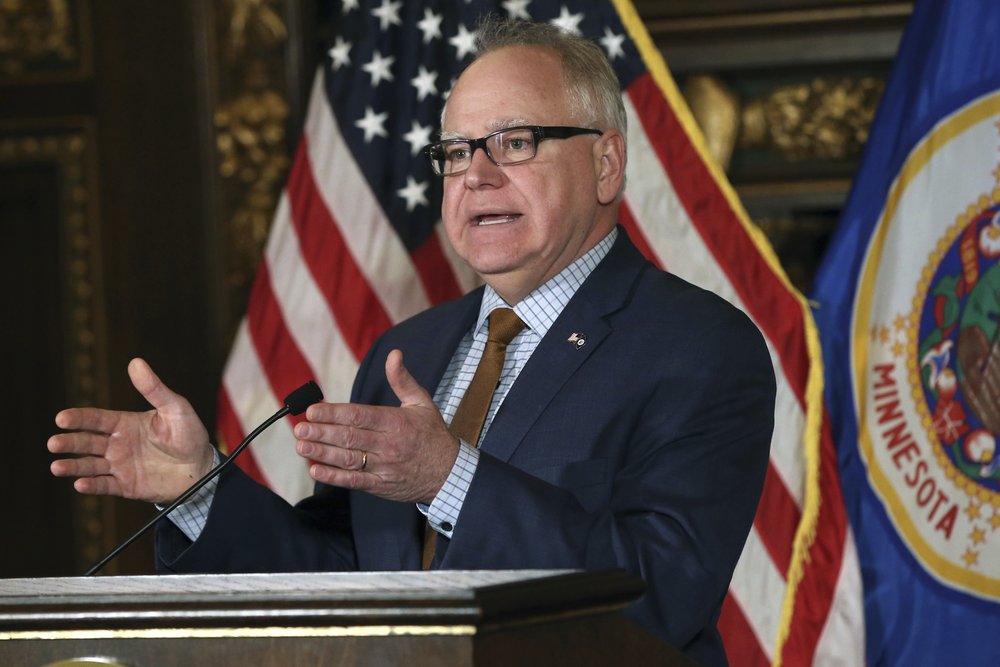Coronavirus
Minnesota governor extends Stay at Home order

MINNEAPOLIS (AP) — Gov. Tim Walz on Wednesday extended Minnesota’s stay-at-home order until May 4, saying his original order has bought the state valuable time to slow the spread of the coronavirus — and that it needs to continue.
While he said at a video news conference that Minnesotans have responded well to the order, which was due to expire Friday, he noted in his order that confirmed cases of COVID-19 are increasing and community spread of the disease is on the rise. But he said Minnesota has succeeded better than nearly all other states in slowing it down.
“We can not rest easy,” he said. “This thing can explode overnight if you don’t take the proper precautions.”
The Minnesota Department of Health reported 85 new cases Wednesday, raising the state’s total to 1,154, and it reported five new deaths for a total of 39. The department said 135 patients were hospitalized Wednesday, an increase of 15, while 64 were in intensive care, unchanged from Tuesday.
The governor’s new order also extends the closure of bars, restaurants and other public accommodations until May 4. But it adds a long list of exemptions to allow workers who had been staying home to return with proper social distancing, including people who work outdoors such as landscapers. Walz said his agency heads will develop protocols over the next three weeks to allow even more people to get back to work. But he said it’s unlikely that schools will reopen May 4.
Walz said continued staying at home is projected to delay the peak in cases until late-May through July. In the meantime, he said, the state will continue working to increase hospital capacity, including intensive care beds, to meet the surge. The state will also keep working to secure additional supplies of ventilators and personal protective equipment such as masks, and to sharply expand testing to clear people to return to work sooner.
Legislative leaders from both parties and the Minnesota Hospital Association welcomed Walz’s decision, saying the strategy is buying hospitals time to prepare.
“If the surge (in cases) is significant, that would definitely overwhelm the health care system. If it’s prolonged, that would also be devastating to the health care system, financially,” said Dr. Rahul Koranne, the association’s president and CEO. “The bottom line is, we don’t have to look at a different continent to know how bad this is and how much of a disaster this could be.”
Earlier Wednesday, Democratic Secretary of State Steve Simon went before a Minnesota House elections subcommittee to ask for temporary authority to ensure the safe conduct of the August primary and November general elections. He said his proposal focuses on minimizing exposure to the coronavirus at polling places and maximizing voting by mail.
The “ugly scene” of Tuesday’s chaotic election in Wisconsin — with its long lines exposing voters to the virus at a sharply reduced number of available polling stations — provided a glimpse of what could happen in Minnesota, Simon told the committee, which met via videoconference.
But Republicans opposed Simon’s proposal in its current form. Rep. Jim Nash, of Waconia, said it would open the door to fraud and electioneering. Nash also said the state’s laws allowing citizens to cast early absentee ballots by mail or in person may be sufficient, though Simon countered by predicting the current rules would still result in too many voters crowding into polling places.
The Republicans also pointed out that under the Legislature’s temporary rules, no bills can come to the floors without bipartisan support from the House and Senate leadership.
The subcommittee did not vote. Its chairman, Democratic Rep. Raymond Dehn, of Minneapolis, said talks would continue.







